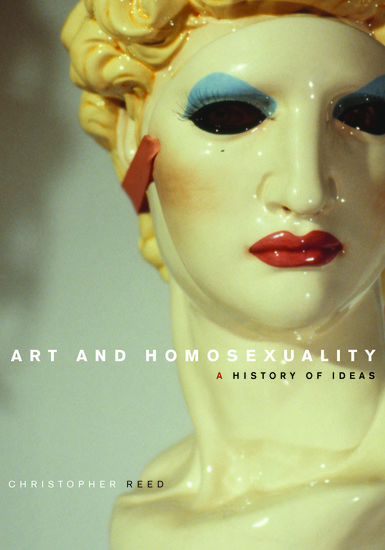 By Josh Rothman -
By Josh Rothman -If alien anthropologists were to visit our world, one of the weird things they'd promptly investigate would be the (apparent) connection between art and homosexuality. From Oscar Wilde to Robert Mapplethorpe, it seems that being artistic and being gay are, somehow, connected -- even if only in the collective imagination. As Christopher Reed, an English professor and art historian at Penn State, points out in his forthcoming Art and Homosexuality: A History of Ideas, "Calling someone 'arty' or 'artistic' has often been a euphemism for homosexuality." Reed's question is: why?
The truth, it seems, is that people in the past weren't quite as invested in identity as we are today. The idea that homosexuality was an identity -- a whole way of being that saturated every aspect of your character, from your dress to your friends to your taste in books and music -- arose only in the mid-nineteenth century. In part, that rising sense of homosexual identity was driven by homophobic doctors, who worked to medicalize homosexual behavior. But that development was, in turn, part of a larger trend towards thinking of people in terms of clearly defined "types." In fact, it was during the same period that the type of "the artist" emerged. It used to be that a painter was just a painter, but now he was an Artist -- a person whose aesthetic sensibility shaped every part of his identity.
Art and homosexuality feel connected to us, Reed concludes, because artists and homosexuals asserted their identities around the same time, and in ways that emphasized their independence from an increasingly airtight society. (Think of Oscar Wilde, who declared independence from every kind of convention simultaneously.) There's nothing intrinsic about art that connects it with homosexuality, or vice versa. The connection, really, comes from the fact that "the artist" and "the homosexual" were two of the most challenging identities to emerge during the golden age of identity. That story is particularly, and peculiarly, modern. As for the future -- Reed doubts that the connection has staying power. History, he writes, shows that "the definitions of art and homosexuality are multiple and constantly evolving." And identities that once seemed vivid and threatening come, inevitably, to seem conventional and familiar. The special magnetism that brought these two identities together will only lessen with time, until it seems inexplicable -- something for art historians of the future to puzzle over.
The truth, it seems, is that people in the past weren't quite as invested in identity as we are today. The idea that homosexuality was an identity -- a whole way of being that saturated every aspect of your character, from your dress to your friends to your taste in books and music -- arose only in the mid-nineteenth century. In part, that rising sense of homosexual identity was driven by homophobic doctors, who worked to medicalize homosexual behavior. But that development was, in turn, part of a larger trend towards thinking of people in terms of clearly defined "types." In fact, it was during the same period that the type of "the artist" emerged. It used to be that a painter was just a painter, but now he was an Artist -- a person whose aesthetic sensibility shaped every part of his identity.
Art and homosexuality feel connected to us, Reed concludes, because artists and homosexuals asserted their identities around the same time, and in ways that emphasized their independence from an increasingly airtight society. (Think of Oscar Wilde, who declared independence from every kind of convention simultaneously.) There's nothing intrinsic about art that connects it with homosexuality, or vice versa. The connection, really, comes from the fact that "the artist" and "the homosexual" were two of the most challenging identities to emerge during the golden age of identity. That story is particularly, and peculiarly, modern. As for the future -- Reed doubts that the connection has staying power. History, he writes, shows that "the definitions of art and homosexuality are multiple and constantly evolving." And identities that once seemed vivid and threatening come, inevitably, to seem conventional and familiar. The special magnetism that brought these two identities together will only lessen with time, until it seems inexplicable -- something for art historians of the future to puzzle over.
No comments:
Post a Comment